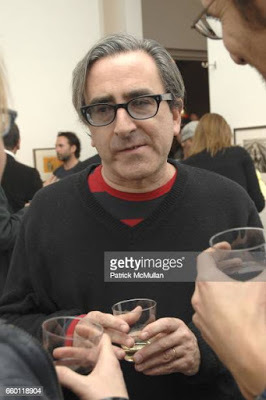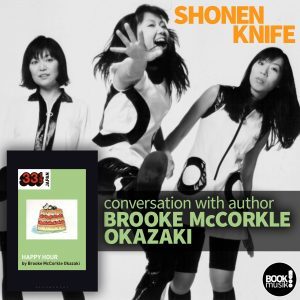Tosh Berman's Blog, page 98
April 3, 2021
Tosh Berman's Saturday, April 3, 2021
April 1, 2021
Wallace Berman, Untitled, 1969
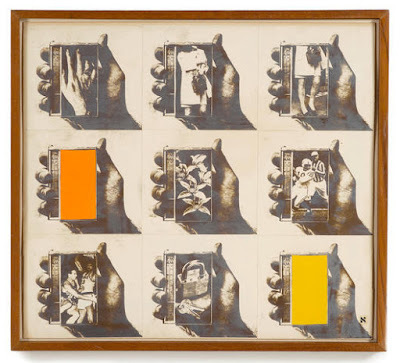 WALLACE BERMAN (1926-1976)Untitled, circa 1969
WALLACE BERMAN (1926-1976)Untitled, circa 1969Verifax collage on paper on paperboard in artist's frame
19 1/2 x 21 1/4 in.
49.5 x 54 cm.
BOOK MUSIK - Shonen Knife's Happy Hour: Food, Gender, Rock and Roll by Brooke McCorkle Okazaki
Book Musik 043 – Shonen Knife’s Happy Hour: Food, Gender, Rock and Roll by Brooke McCorkle OkazakiPosted on April 1, 2021 by Book Musik
Tosh and Kimley are joined by author Brooke McCorkle Okazaki to discuss her new book Shonen Knife’s Happy Hour: Food, Gender, Rock and Roll(33 1/3 Japan). Shonen Knife, a trio of women from Osaka, Japan have been sharing their own special brand of rock and roll since 1981 and are still going strong. Often referred to as a Japanese version of the Ramones, they have expanded far beyond that early comparison. Recording in both Japanese and English, they’ve built a worldwide fanbase. Singing about food is a dominant theme and they’ve found a way to unexpectedly mix cute with cool. Brooke makes it clear that there is no pigeonholing this hugely influential and eclectic band.
Theme music: “Behind Our Efforts, Let There Be Found Our Efforts” by LG17
March 29, 2021
[ Who is in "Who is Lun*na Menoh" ] vol.2 - Tosh Berman
A (very) mini documentary on Tosh Berman, through "Who Is Lun*na Menoh? documentary.
March 28, 2021
The Marmalade -"Man In A Shop" Vinyl 45 rpm Single, 1967 (Epic)
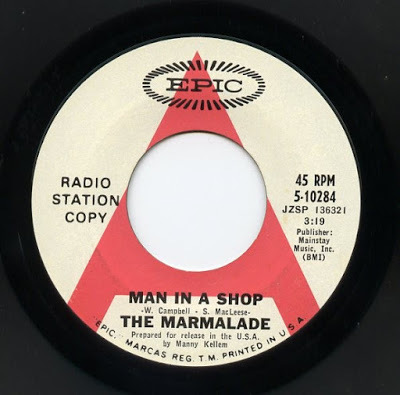
The Marmalade is not a Scottish band with a lot of character. There is a good song here and there, but then there is Man in a Shop, a record I have been obsessing with for the past 12 months. It's strange how a song or recording hits you when you at least expect it. I think I was intrigued just by the title; what does it mean to be a man in a shop? Before we go into that subject matter, it is best to describe The Marmalade's music as very radio (at least in the UK) friendly with touches of Roy Wood's The Move mixed with the vocal abilities of The Hollies. Which sounds good on paper, but they don't have the Roy Wood genius of writing tunes. Still, they came up with Man in a Shop.
The song is full-on psychedelic chamber-pop with a certain amount of sadness—a cocktail of a tune that I couldn't avoid at any cost. I don't know if MIAS was a hit or not, but I don't understand how such a brilliant piece of earworm music could have failed. Reading the lyrics off the computer screen seems to be about a male shop owner who runs a clothing boutique for women, and is soft (in the head? Sexually?) and is lonely. There is a crowd of girls outside looking at the display window and admiring the mannequin or doll wearing the clothes for sale. He puts up a new dummy in the window and throws the old one into the basement. One can also read that this is about a psycho-killer. There is a weird communication between the kids outside the shop and the man (very much) inside.
The song opens with an electric guitar playing backward. Any record that starts off with a backward guitar is more likely be a masterpiece as a rule. And then when you add trumpets to the backward guitar, well, you're close to God. Even though I have my suspicions about this 'man in a shop.'
Here are the lyrics:
Here's a tale of a man in a shop, who wasKinda soft and liked to, dream all dayIn the day a loving man in a shop, there areLots of things that I would, like to say, about loneliness
There's a little crowd of kids formed 'round my windowThey've all come to see my Princess, ain't she beautiful
You can tell, by their smilesWhat she means to their, little mindsShe like's something out of, one of them child rhymes
There's a crowd of little girls now, 'round my windowThey all like the clothes she wears lying there beautiful
You can tell by their smilesThat they like the style but not the priceThat they, would have to pay, to live like her
Just a tale of man in a shop, who wasKinda soft and liked to, dream all dayIn the day a loving man in a shop, there areLots of things that I would, like to say, about loneliness
There's a lovely new girl in my windowThrew the old one in the cellar, ain't that pitiful
Maybe he can make more doughSince he's to change the girl, we don't knowWe will just have to wait, and see
That's my tale of a man in a shop, who wasKinda soft and liked to, dream all dayIn the tale of a man in a shop, there are Lots things that I have, had to say
- W. Campbell and S. MacLeese
Speaking in Tongues: Wallace Berman and Robert Heinecken
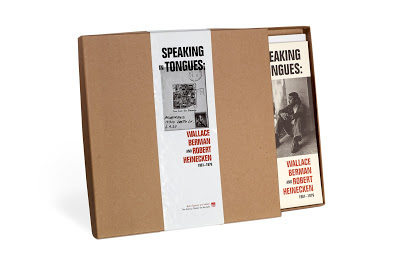
Speaking in Tongues" was an exhibtion and catalog that explored the art and relationship between my dad Wallace Berman and Robert Heinecken. The exhibtion itself was ten years ago. Curated by Claudia Bohn-Spector and Sam Mellon.
Speaking In Tongues: Wallace Berman and Robert Heinecken 1961 - 1976
'Speaking in Tongues...' brings, for the first time, two seminal yet under-studied Los Angeles artists into close conversation. The exhibition examines how Berman and Heinecken bridged modernist and emerging post-modernist trends by ushering in the use of photography as a key element of contemporary avant-garde art. Their works are explored within the unique cultural context of 1960s and 1970s Southern California, as it fueled and amplified their highly original creative approaches.
March 27, 2021
Bowie -"Rare" 1982, Compilation, Italy (RCA)
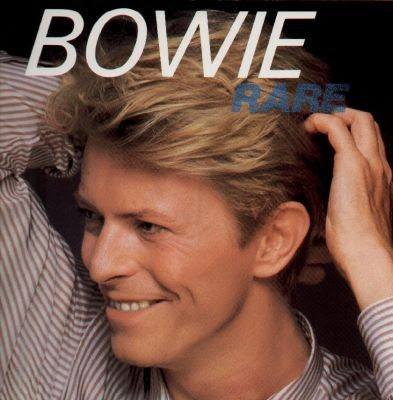
On one level, a knock-off compilation of bits and pieces of David Bowie's music career output in the year 1982, issued and compiled in Italy by Carlo Basile and Fabrizio Ferrucci. It depends on how one defines 'rare' these days, but finding these recordings on one vinyl disc is rare. Although I have a few on 45 rpm singles, I didn't have any of them on an album.
Basile and Ferrucci, whoever they may be in the Italian music world, did a fine collection of Bowie songs. Ragazzo Solo, Ragazza Sola (translated title into English is Lonley Girl, Lonely Boy), the Italian version of Space Oddity. The pleasures of hearing Bowie singing in Italian and German for Helden (Heroes) are worth the package for me. But it's really having Velvet Goldmine, Holy Holy, Moon of Alabama, and the instrumental Crystal Japan that makes it a must-buy.
March 26, 2021
Procol Harum - "Procol Harum" 2019 Reissue (Fly Records)
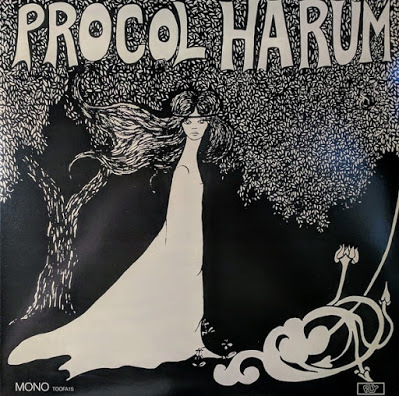
I first bought this album in the year it was released, which is 1967. For over 50 years, I have purchased "Procol Harum" over and over again. I have four different editions of the record on vinyl, and at least one in the CD format. Why I love this album since I was 13-years old is a bit of a mystery to me. Most of the music on "Procol Harum" is sad to me, and I'm attracted to melancholy melodies and performances. Perhaps it's the inner-goth in me or that the music brought images to my head. To this day, I really don't know what the lyrics for"A Whiter Shade of Pale" are about. I haven't even bothered to read them. There also have been a few covers of this song, and every one of them is a good one. Of course, Procol Harum's take on their song is the best. Gary Brooker, the vocalist, composer, and pianist, has a soulful singing voice. The lyrics by Keith Reid are rich in imagery and detailed with specific descriptions of incidents or objects. I dwell on the mystery, but I don't want to know or have the answers. Procol Harum's music lingers like a faint appearance of marijuana. I remember reading an interview with Robbie Robertson of The Band putting down "A Whiter Shade of Pale" as an imitation of the song "When a Man Loves a Woman" and thinking he's an idiot. To this day, I can't really listen to The Band due to what he said about my favorite song.
If one has to choose one edition of this classic album, it would be "Procol Harum" reissued in 2019 by Fly Records (distributed by Forced Exposure in America). It's a double album set. The first disc is the original album in mono. The second disc is a collection of b-sides and some a-sided singles that didn't make it onto an album release. The other great classic Procol Harum song is "Homburg." For one, I love the idea of a song named after a hat. It's a beautiful melody, and there are two versions of it on the album. The seven-minute version is superb. Perfection in every manner possible. Plus, there are Italian language versions of "Quite Rightly So" and "In The Wee Small Hours of Sixpence." After so many years, I now feel satisfied with having this one version of a perfect album.
Wallace Berman, The Jewish Museum, New York, September 17 - November 17, 1968
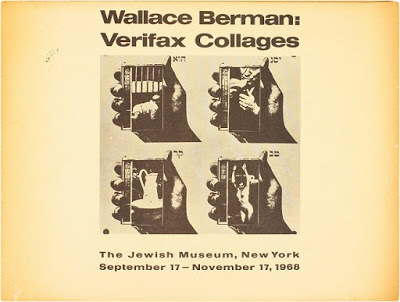
Wallace Berman had a solo show at the Jewish Museum in 1968, curated by Kynaston McShine. He went to NYC for the hanging of the show, as well as to the opening. He went to NYC by himself, stayed at someone's apartment and immediatly got homesick for Topanga. On the other hand, the nearby bar/tavern was Max's Kansas City, and that was a good sign.
New York: The Jewish Museum, 1968. Paper browned, light edge creases; very good in illustrated printed wrappers.. First Edition. Oblong quarto, folded. Catalogue for Berman's exhibition "Verifax Collages" at The Jewish Museum, New York, September 17 - November 17, 1968. Four panel illustration on the verso. Text by James Monte, checklist, exhibition directed by Kynaston McShine.

